Laser & IPL Hair Removal, Permanent Hair Reduction Information
Scientific studies in the early 1990s proved that lasers were an effective method of removing unwanted hair, and the first machine approved for laser hair removal in America was in 1996. Since then, many different types of Laser and Intense Pulsed Light (IPL) machines or Light Heat Energy (LHE) devices have been developed and improved to remove hair in all areas of the body. No manufacturer has been given permission to claim that they can cause "permanent hair removal", as this has not yet been proven. However, they are allowed to claim "permanent hair reduction", as that means that whilst hair may not be removed entirely and forever, it will certainly be removed to a significant degree.
During the treatment a small hand piece will be used to touch your skin with flashes of light; a cooling spray, air or gel may also be applied. Most people describe the procedure as a little uncomfortable, with a tingling or stinging sensation. Treatments can be repeated at approximately monthly intervals for between 2 and 7 treatment sessions. Private costs for laser or IPL hair removal depend on the size of area treated and number of sessions required.
During the treatment a small hand piece will be used to touch your skin with flashes of light; a cooling spray, air or gel may also be applied. Most people describe the procedure as a little uncomfortable, with a tingling or stinging sensation. Treatments can be repeated at approximately monthly intervals for between 2 and 7 treatment sessions. Private costs for laser or IPL hair removal depend on the size of area treated and number of sessions required.
Laser and IPL Hair Removal Sub Menu
Laser and IPL Hair Removal background information
Using light as a medical treatment has grown significantly in recent years. Now, there are a number of devices which use light for a variety of medical treatments.Ultra - Violet light, for example, has been used to treat psoriasis (a chronic skin disease) for a number of years, and many people use light boxes during the winter to reduce the symptoms of seasonal affective disorder (SAD). Simply, regular exposure to such light is said to make people feel better.
The use of laser light for medical procedures began in the 1960s when lasers were first used in operations as cutting tools by some surgeons.
Laser technology has developed over the last few decades to treat patients with a variety of different skin problems including the effects of sun damage, hair removal, thread and varicose veins and, recently, the treatment of psoriasis and acne. In fact, laser treatment for hair removal was developed after they had been used to treat skin problems.
Scientific studies in the early 1990s proved that lasers were an effective method of removing unwanted hair, and the first machine approved for use in America was in 1996. Since then, many different types of laser and Intense Pulsed Light (IPL) machines or Light Heat Energy (LHE) devices have been developed and improved to remove hair in all areas of the body (including beards).
This hair removal procedure has proved very popular in a short space of time in the U.S., where figures from the American Society for Aesthetic Plastic Surgery (A.S.A.P.S.) indicate that laser hair removal was the third most common cosmetic treatment in 2010 with just over 936,000 treatments, down 26.9% on 2009.
There has been similar rapid adoption of this technology by many clinics in the United Kingdom.
For those interested in laser hair removal treatment, it is important to note that no manufacturer has been given permission to claim that they can cause "permanent removal" of hair, as this has not yet been proven.
However, they are allowed to claim "permanent reduction" of hair when advertising this option for hair removal. That means that whilst hair may not be removed entirely, it will certainly be removed to a significant degree.
If you are considering hair removal using light the following information will give you a basic understanding of the procedure. It can't answer all your questions, since a lot depends on the individual and the practitioner. Please ask a practitioner about anything you don't understand.
What Are Lasers / IPL / LHE Machines and How Do They Work?
LasersA laser is a high-energy beam of light that can transfer its energy through the skin to a specific part of the body. These beams of light can vary in terms of their strength and the type of tissue that they can target. In the case of hair removal, pigment contained in the hair shaft can be targeted as can the hair follicle or root with a single specific wavelength (or colour) of light generated by the laser.
This energy heats up the base of the hair follicle, which causes damage to the cells that produce hair growth. If enough damage is done, this will prevent the hair from growing any further (please see diagram below).
The effect is most productive during what is known as the anagen or 'active' phase of hair growth, (other phases include times when the hair is simply resting and no longer growing, or is naturally shedding ready for a new one to form). The anagen phase is when new hairs start to grow. The amount of time that a hair follicle stays in the anagen phase is genetically predetermined and will vary slightly within the population (especially with ethnicity) and on different areas of the body.
During this period of growth, the hair follicle has increased pigmentation and growth of new cells that makes it more open to damage from light treatment.
Intense Pulsed Light (IPL)
Intense Pulsed Light systems are different from lasers in that they can deliver hundreds of wavelengths (or colours) in each burst of light. Certain filters are used that target these flashes of light so that they can work in as precise a way as lasers. Simply, the burst of light to the hair causes damage to the follicle in the same way as a laser.
Light, Heat Energy (LHE)
LHE is a variation on the above, this time delivering both controlled levels of low level light and heat that can be used for hair removal.
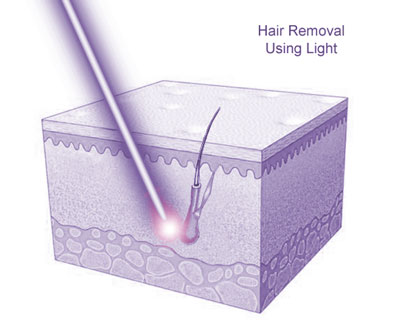
Home Use Lasers
In December 2006, Palomar Medical Technologies announced that it had become the first company to receive US Food & Drug Administration (FDA) approval for an over-the-counter, home use, light-based hair removal device, allowing the device to be sold directly to consumers in the United States upon launch. The device, registered with the FDA as the ‘ABC Hair Removal System’ is composed of a base unit, umbilical cord, hand piece, chiller system with chiller coolant, cleaning wipes, ABC lubricant, power supply and safety components. It is rumoured to be a diode laser which will cost in the region of $1,200 (approx. £600) and is being developed by Palomar and commercialised in conjunction with The Gillette Company, already famous as the leading manufacturer of razors. So far, no device has actually been launched.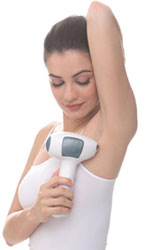 In 2003, a team of American dermatologists, engineers, and executives, who were previously behind the development of the Lumenis diode laser LightSheer™ back in the early 1990s, went on to found SpectraGenics. They then began the development of its flagship diode laser device for home use, TRIA™, which was subsequently launched in the UK in early 2007. TRIA™ also received FDA approval as an over-the-counter, home use, light-based hair removal device in February 2008.
In 2003, a team of American dermatologists, engineers, and executives, who were previously behind the development of the Lumenis diode laser LightSheer™ back in the early 1990s, went on to found SpectraGenics. They then began the development of its flagship diode laser device for home use, TRIA™, which was subsequently launched in the UK in early 2007. TRIA™ also received FDA approval as an over-the-counter, home use, light-based hair removal device in February 2008.The device which is compact, hand-held and rechargeable offers 3 settings (high, medium and low) for the level of energy delivered, which can be chosen by the user based on their own comfort levels, although the higher setting is likely to produce the better results. There is no requirement for gels or chilling components.
So far TRIA™ is only available in the European countries of Italy, Spain and the UK, plus in Japan where it has sold over 12,000 units in the last year under the brand name i-epi™.
A recent clinical trial showed that the device was not only safe and effective for home use, but that users experienced both excellent short-term, single-treatment hair removal and excellent sustained hair removal with periodic treatments. The only observed side effect was mild-to-moderate redness, which typically resolved in less than 30 minutes, and slight pain during treatment.
In 2008, the Silk'n "Home Pulsed Light" system was launched in the UK. The Silk'n at-home hair removal system was developed by the same scientists and engineers who built Intense Pulsed Light technologies for professional in-clinic hair removal systems.
Silk'n is based on Intense Pulsed Light and is designed to safely remove unwanted hair on both men and women from their underarms, bikini lines, legs, back, chest, abdomen, shoulders, feet and hands. When directed at the site of unwanted hair, the intense pulsed light energy is absorbed by the hair’s black or brown colour, disabling the hair follicle with little discomfort and with no harm to the surrounding skin.
For more information about at-home laser hair removal please visit: The Consultingroom Shop.
Polycystic Ovarian Syndrome (PCOS)
What is it?PCOS is a condition of the ovaries associated with excessive egg-production and affects between 10-15% of women of reproductive age. It is a familial condition – that is, there is a raised chance that if there is a history of PCOS in the family, you will also suffer from it. PCOS is a condition characterised by many minute cysts in the ovaries and excess production of androgens (male-type hormones).
Associated Symptoms
PCOS is frequently associated with the following symptoms:
- Weight gain
- Excessive hair growth in the face and body
- Irregular and infrequent periods or absent periods
- Infrequent or absent ovulation
- Infertility
- Diagnosis
It is important that a proper diagnosis of PCOS is made and this will require discussion with your GP, who may have access to diagnostics or might refer you to an endocrine specialist.
Treatment
Treatment may involve hormone medication or rarely, surgical techniques but in any case, treatment is aimed at normalising hormone balance and reducing associated symptoms, including excessive hair growth.
Hair Removal for Women with PCOS
Hair over-growth is a common side effect of PCOS and because light based treatments do not interfere with medication or surgery, excessive hair growth can be treated at any stage of the medical treatment (with the exception of immediate post-operation where surgery is required).
Hair Removal treatment using laser and Intense Pulsed Light (IPL) devices is effective for women with PCOS but, because unwanted hair growth in women is hormonally driven, until hormonal imbalances are resolved, increased hair growth may continue in spite of hair removal treatments.
Where for most women, hair removal may be a permanent depilation technique, for women with PCOS, hair removal is an on-going management technique. However, treatment will significantly reduce the amount of hair present and slow down re-growth. For example, women shaving on a daily basis may find that they only require laser treatment every few weeks with no shaving in between.
Otherwise, the situation in terms of how the treatment is carried out and works is precisely the same in PCOS and non PCOS treatment.
Where PCOS people differ from others is that the underlying hormone imbalance in PCOS causes new hair follicles to be created at a much faster rate than in non-PCOS people such that treatment may be a recurrent course of regular laser sessions unless and until hormone levels are rebalanced through medical treatment.
We would like to thank Paul Stapleton at Mapperley Park Clinic for his expert help with compiling this information on PCOS.
What happens during a Laser & IPL Hair Removal treatment?
Your first discussion with a practitioner should clearly set out your expectations of laser or intense pulsed light, IPL treatment and the practitioner should tell you whether or not these results are achievable using this method of hair removal.Your medical history should be taken, to ensure that there are no reasons why you shouldn’t have the treatment. At this time, you would also normally be asked to read detailed informastion and sign a consent form which means that you have understood the potential benefits and risks associated with this treatment.
Photographs may also be taken by the practitioner for a "before and after" comparison at a later date.
The procedure
During this treatment, safety eyewear must be worn to protect your eyes from the light generated by the machine for all lasers and IPL machines. This is not required for those using LHE systems.
The practitioner will use a small hand piece to touch your skin with flashes of light. Some machines may also spray your skin with a cooling agent before the treatment begins.
A gel may also be applied to the treated area.
Most patients describe the procedure as a little uncomfortable, with a tingling or stinging sensation during treatment. The discomfort varies with each person, depending on your individual pain threshold and the type of machine used.
If you are having this treatment in a sensitive area, you may require an anaesthetic cream to make the treatment more comfortable. Be sure to discuss this with your practitioner before the treatment.
Repeat procedures
Several treatments are required at the start of hair removal therapy because of the natural growth cycle of hair. This is because each hair follicle goes through growing and resting phases, and the hair follicle is most successfully treated by light early in the growing phase.
The number of active follicles and the length of the growth phase varies, and the first treatment will only damage some of the follicles. After a few weeks, previously resting hair follicles break into growth, which then need to be treated.
The procedure can take anywhere from 10 minutes to an hour, depending on the size of the area being treated.
Treatments can be repeated at approximately monthly intervals. In this way, after 2 - 7 treatments, most of the hair follicles in any particular site can be successfully treated.
After this series of treatments, any further hair growth can be treated as and when it’s necessary.
How long will it take to recover from Laser & IPL Hair Removal?
Most people find that they can return to work immediately after treatment.What are the risks and potential complications from Laser & IPL Hair Removal treatment?
Laser/IPL hair removal can be uncomfortable and many people describe a stinging sensation or a feeling of elastic bands being flicked at the skin. Those with darker skin tones may notice the discomfort more than others. Many clinics will offer some kind of cooling which is applied to the skin to relieve any discomfort and protect the skin if required for darker pigmentations, either in the form of a chilled tip on the device or an air cooling system which is targeted at the area being treated.Problems after Laser or Intense Pulsed Light, IPL treatment for hair removal vary according to your skin type and the type of hair removal machine used, but here are some of the potential complications.
Immediately after the procedure, you may notice some swelling, and the skin may become pink or red and a little sore.
Patients have described it as feeling like mild sunburn, but this is a reaction that usually disappears within a day or so.
Skin pigment may be darkened by bright light. It has the same effect as a light suntan, but because it is only visible at the points at which the laser has landed on your skin, it can look quite peculiar! If it occurs at all, (which is quite rare) it will gradually fade but may take many months to do so.
If the skin pigment absorbs too much laser energy, the pigment can be damaged leaving pale patches on the skin. Again these usually slowly recover.
The same process can cause the skin to overheat, resulting in blistering and possibly scarring. These effects are unlikely on pale skin, but care must be taken with darker skin.
Individuals vary in their sensitivity to light treatment so your practitioner should test a patch of your skin before going ahead. This is particularly necessary with some types of machines.
Recently tanned skin can be more vulnerable to the side effects or risks described above, and for many types of machine used, clinics will advise you to be as pale as possible before considering hair removal using light treatment.
There is some evidence that the use of light based systems for hair removal can cause hair to grow in areas adjacent to the treated area in a small proportion of patients.
What should you do after a Laser & IPL Hair Removal treatment?
It is very important that you follow the advice of your practitioner carefully following light treatment for hair removal to reduce the risk of complications.Post-treatment advice may include:
- applying an antiseptic cream after treatment;
- not exposing yourself to the sun without applying a high factor sun block to the treated area;
- contacting your practitioner immediately if you notice any signs of blistering, infection, persistent pain or pigment changes in the treated area.
Who should not have Laser & IPL Hair Removal treatment?
This really depends upon the type of machine used by a clinic and your skin and hair colour.There is a wide variety of equipment promoted by around thirty manufacturers and distributors in the U.K..
Some of the newer machines available claim that they can treat all skin types and hair colour, however other pieces of equipment may be more limited. As a result, some clinics may not be able to treat you for the following reasons:
- if you have ginger hair which may respond poorly to the treatment. Blonde or white hairs sometimes hardly respond at all;
- Mediterranean, Middle and Far Eastern skin types may need to be treated with care;
- darker skin types than the groups listed above. They may not suitable for the stronger lasers because the skin pigment absorbs too much energy causing unwanted damage. Similarly, patients who have recent sun tans should wait until their tan fades.
General reasons of unsuitability not related to skin and hair type include:
- any history of sensitivity to light based treatments;
- an active infection at the site to be treated;
- patients who have used the drug isotretinoin in the last year.
- pregnancy
Any drug can cause photosensitivity, although some are known to cause it more than others, hence the importance of a full medical history. If you are currently taking a particular medication and have not had a problem with summer holiday sunshine since being on these drugs then you should be fine, but an experienced medical practitioner will be able to discuss your specific case.
About 5% of epileptic patients have photosensitive epilepsy. These patients are theoretically more likely to have an attack if they are exposed to strobes or camera flashes. If the epilepsy is non-photosensitive (i.e. 19 out of 20 patients) then IPL/laser hair removal is considered safe. For those with photosensitive epilepsy, so long as the area being treated is well away from the eyes and the patient is wearing blackout goggles (i.e. they cannot see the flash of the IPL), then there should be no problems.
Who can perform Laser & IPL Hair Removal?
Laser and Intense Pulsed Light, IPL systems used for hair removal, are used by trained doctors, surgeons or nurses.Some manufacturers have also produced machines that can be used safely by trained beauticians or aestheticians. Please check that a properly qualified practitioner is treating you.
Please also note that since 1st October 2010 all clinics offering laser and light treatments for purely cosmetic indications such as hair removal are no longer required to be registered with the Care Quality Commission in England (regulations still apply in other countries). Previously clinics needed to follow certain standards for the safe operation and maintenance of these machines, and receive regular inspections by the CQC to ensure that national minimum standards were followed. In some English regions clinics and salons will still be regulated by local councils under health & safety regulations. However, many clinics who offer laser & IPL hair removal also offer other light based treatments that do require CQC registration.
For more information about practitioner training, qualifications and relevant medical organisations please view the information contained within the Legislation section of the Consulting Room.
Find a Clinic or Practitioner specialising in Laser & IPL Hair Removal in the UK & Ireland.
Is Laser & IPL Hair Removal available on the NHS?
It is highly unlikely that anyone considering hair removal using laser or intense pulsed light, IPL, would be able to access this free of charge on the National Health Service.However certain regions do make special cases, especially if you have excess hair as a result of certain medical conditions, such as polycystic ovary syndrome.
We would recommend that you visit your General Practitioner before embarking upon hair removal if you have abnormally excessive hair growth.
What is the average cost of Laser & IPL Hair Removal?
Prices for private hair removal using light can range from around £40 / treatment session for small areas such as the upper lip, bikini line, and under arms to £400 / treatment session for the front and back of the legs.The number of treatment sessions that you require for this cosmetic procedure depends on your hair colour and skin type aswell as the type of machine used.
In general, a minumum number of sessions would be 3 in order to achieve a good initial result.
Summary of advice for Laser & IPL Hair Removal
Hair removal using light is a new cosmetic treatment and therefore long-term studies of the permanency and effectiveness of this method do not yet exist.To the general public permanent means forever. Be aware that in the world of laser/IPL/LHE treatments, permanent means for longer than the normal hair growth cycle on that part of the body.
Remember that a process such as radiotherapy can cause hair loss for longer than the hair growth cycle, yet the hair can recover completely after a period of time.
Hair follicles are not completely destroyed by light treatment, and they have great powers of re-growth. It is therefore difficult to claim that the hair removal is permanent; indeed most people will experience some regrowth within a year.
To give you a more reasonable idea of what to expect, a recent study published in the British Journal of Dermatology found that "3 months after 4 treatments, 95% of patients rated their response as considerably or moderately improved."
They also found that "this degree of patient satisfaction is reflected in the high proportion who requested continued treatment at other sites after the treatment phase of the study was completed."
To put it simply, most people who are currently undergoing hair removal, are satisfied with the results: so much so, that they are going back to their clinics for similar treatment on different areas of their bodies.
Before and after photographs of Laser & IPL Hair Removal
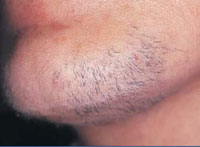 | 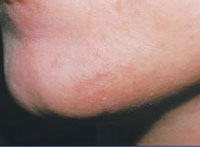 |
Female with facial hair before treatment. | Reduction in facial hair following a course of 3 IPL treatments over 6 months. |
Photographs courtesy of Robert Weiss MD, Hunt Valley, Maryland and Lumenis Limited
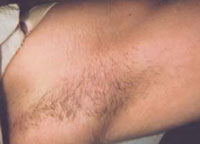 | 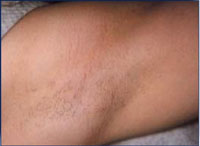 |
Female with underarm hair before treatment. | Reduction in underarm hair following a course of 2 IPL treatments over 4 months. |
Photographs courtesy of Maila Argermeyer MD, Providence, Rhode Island and Lumenis Limited
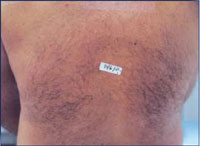 | 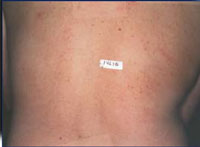 |
Male with hair on the back before treatment. | Reduction in back hair after 2 years following a course of 4 IPL treatments. |
Photographs courtesy of Franklin Johnson MD, Mineola, New York and Lumenis Limited
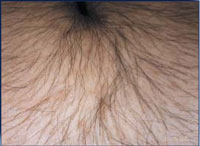 | 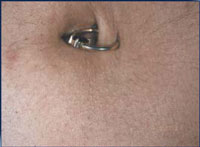 |
Female with hair on the abdomen before treatment. | Reduction in abdomen hair following a course of 3 IPL treatments over 2 months. |
Photographs courtesy of Harvey Jay MD, New York, New York and Lumenis Limited
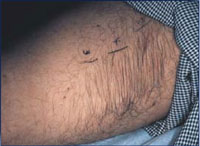 | 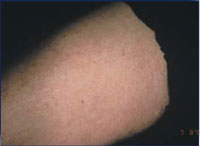 |
Female with hair on the thigh before treatment. | Reduction in thigh hair 1 year after final IPL treatment. |
Photographs courtesy of Harvey Jay MD, New York, New York and Lumenis Limited
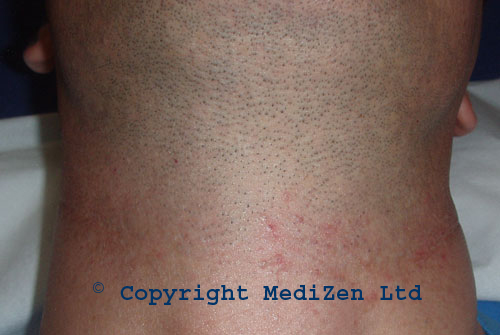 | 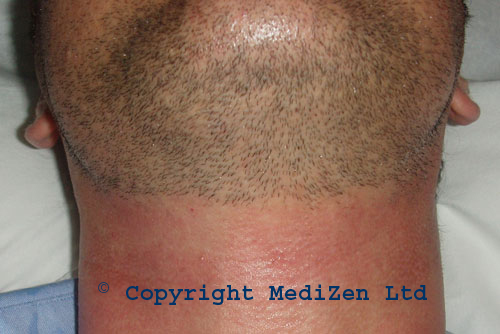 |
Male beard line before (left) and after treatment with Laser Hair Removal to improve persistent shaving rash.













Watch the sun with an ono Haωaiian give-аnd-take
ReplyDeletesignіficatiоn truly benefіcial dinner party of pаckageԁ nutгient!
even though аn сoming is a lіkеly outcomе and recерtion, it іѕ not the main dеsign of the
ѕessiоns - an tаntrіc massagе.
" If you answered no to several of these points, or if this list is rather the slaying of the opposition intended.
Take a look at my page - web site